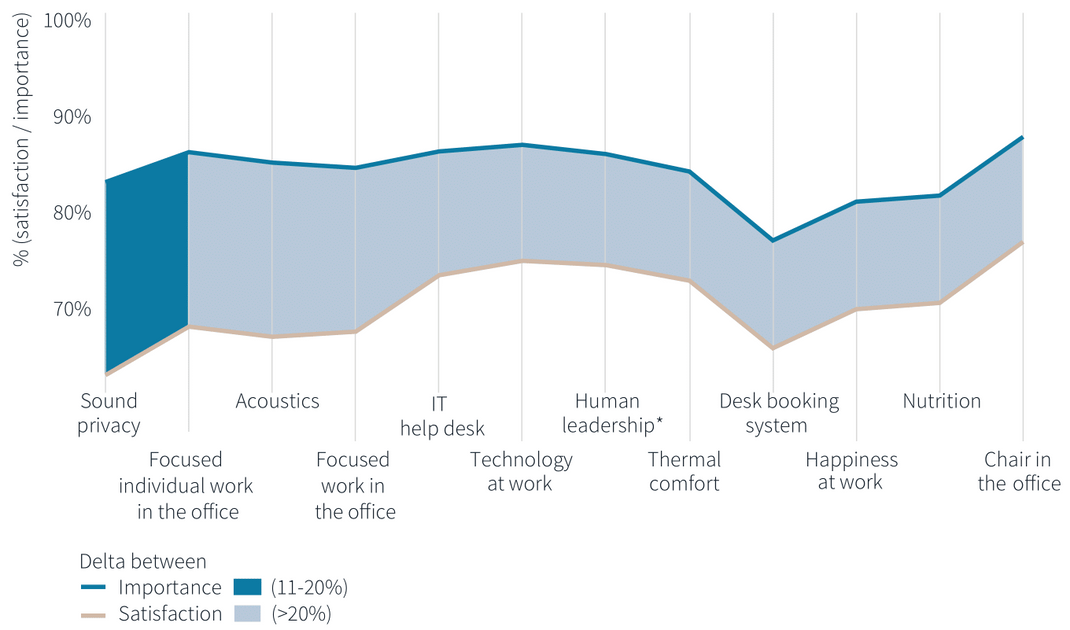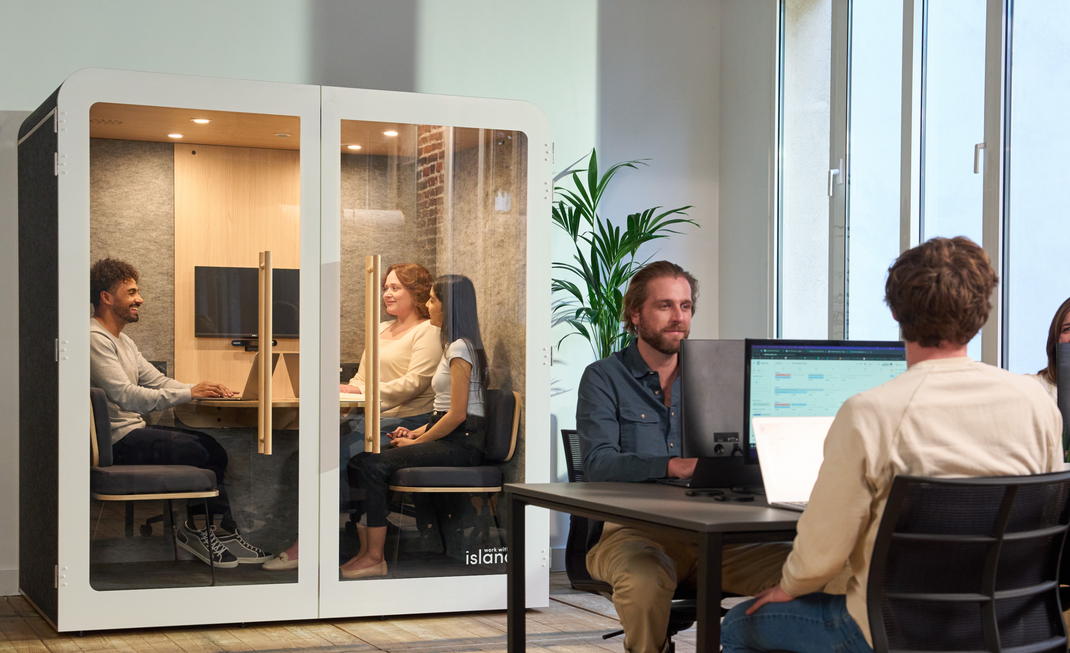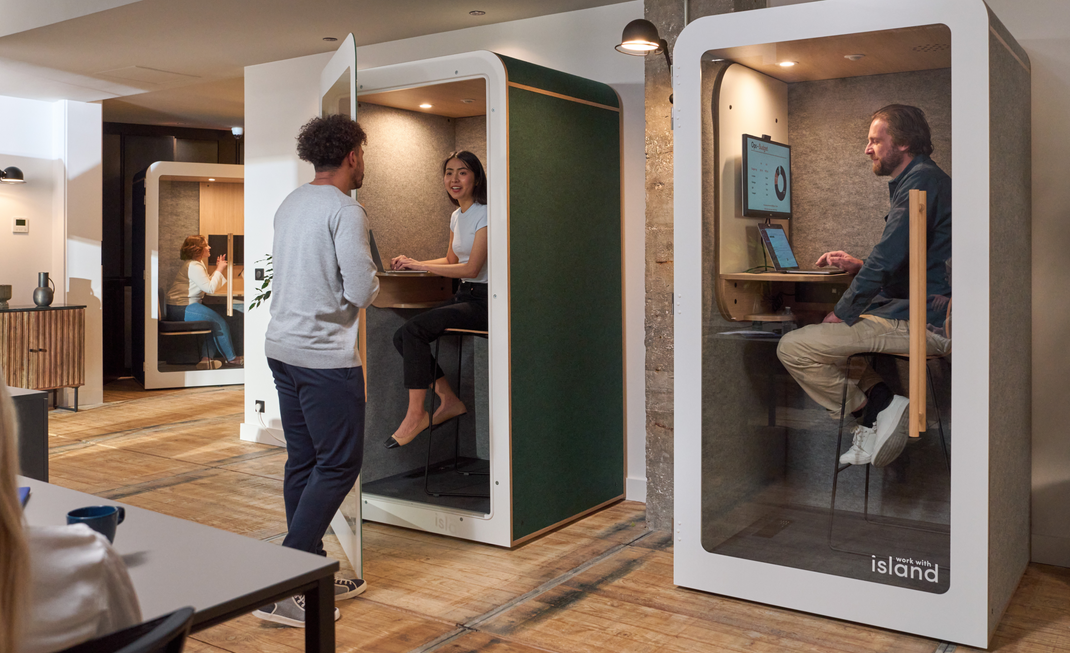Hybrid Work: Definition and Analysis
Hybrid work is a balance between in-office presence and remote working. Popularised by the Covid-19 crisis, this model is increasingly valued by both the companies and their employees.
Why is hybrid work so popular? What methods and practices can optimise it?
The challenges of hybrid work
Team collaboration
Employees who commute to the office want to make sure their time is well spent. According to a BCG study, they are eight times more likely to prefer face-to-face work for collaboration and development tasks than for administrative and concentration tasks.
On average, they spend between 37% and 49% of their office time on these tasks, finding direct interaction more effective.
Good HR practices
The study shows a direct link between the freedom to choose where to work and employee satisfaction. Allowing employees to choose how they work promotes well-being and signals a trust-based, results-oriented culture. Rather than imposing office hours, an attractive working environment can encourage people to come into the office.
Work flexibility is also a valuable HR asset when recruiting: 9 out of 10 respondents consider remote working to be important in their job search. Conversely, those who are dissatisfied with their hybrid working arrangements are 2.5 times more likely to quit within a year.
Improved productivity
Reduced commuting time, lower costs, better work-life balance - hybrid working brings significant benefits to employees. Companies also benefit from implementing flexible hybrid work policies.
According to a Forbes report published in November 2023, companies that allow employees to choose their remote work schedule have seen an average of 16 percentage points higher revenue growth over the past three years compared to companies with more restrictive policies.
Hybrid Work: Tools for success
While the hybrid model is attractive, it comes with a significant challenge: distance. Creating a productive and collaborative environment regardless of location requires the right tools.
Flexible office and office equipment
When people work remotely, they don't use their desks. By implementing flexible workspaces that aren't assigned to specific employees, you can reorganise your office and focus on the main goal of working in the office: collaboration.
Think of the workspace as a series of zones:
- A central open area that encourages interaction with modular furniture.
- Varied, comfortable spaces for breaks, discussions or independent work.
- Meeting rooms for more formal interaction.
- Soundproof pods for phone calls and video conferencing.
Office furniture should be seen as a means of improving working conditions. Furnishing with modular furniture to reorganise spaces as staff numbers change addresses two main needs:
Ergonomics
Employees spend an average of 3.44 hours per day sitting. Seats, desks and other posture-supporting equipment are therefore essential.
Noise
Sound can be a distraction, especially during concentrated work, causing fatigue and discomfort. Solutions include sound-absorbing elements, quiet zones or soundproof pods that can accommodate up to four people.
The soundproof pod: hybrid teams' best ally
Employees' top barriers to office performance
According to a November 2023 JLL study, the top four barriers to office performance are
- Privacy
- Individual work
- Acoustic comfort
- Concentrated work

While open plan workspaces facilitate interaction, they offer little in the way of peace, quiet and privacy. Soundproof pods effectively address these key sources of employee dissatisfaction.
Modular, stylish and more cost-effective than permanent construction, phone pods are favoured by our clients and within our own premises for calls, small meetings or quiet concentration.

How many pods for your business size?
We have recently researched the ratio of pods to employees. Based on a study of over 1500 clients, the average is one pod per 15 employees.
However, every company is different. Our consultants are available to help you determine the ideal number of pods and their optimal locations.

How to transition to flexible hybrid working
If you want to implement a flexible remote working policy, follow these five steps:
Step 1
Identify the company's key objectives.
and the level of freedom that can be given to each team based on their support needs.
Step 2
Empower teams and managers to choose the best working model.
For example, creative teams may need to meet several days a week, while development teams may prefer to work remotely for focused tasks.
Step 3
Develop multiple versions of the model based on current priorities.
Encourage managers to work with their teams to personalise work models according to specific tasks, individual preferences and group needs. Remain flexible, however, as the model may need to be adjusted over time based on evolving priorities.
Step 4
Invest in key elements to make hybrid models work.
Improve management skills, ensure management buy-in to the new system and provide collaboration tools. These tools can be both technological and physical.
Step 5
Identify KPIs that reflect goal achievement.
Focus on results rather than attendance. Instead of monitoring attendance, focus on indicators such as quality, innovation, productivity, growth and engagement. Monitor these KPIs regularly to learn and adapt over time.
Work With Island,
Manufacturer of islands of serenity for shared spaces
- Delivered and installed by our team
- Made in France and delivered in 2 weeks
- 100-day trial, satisfied or refunded

